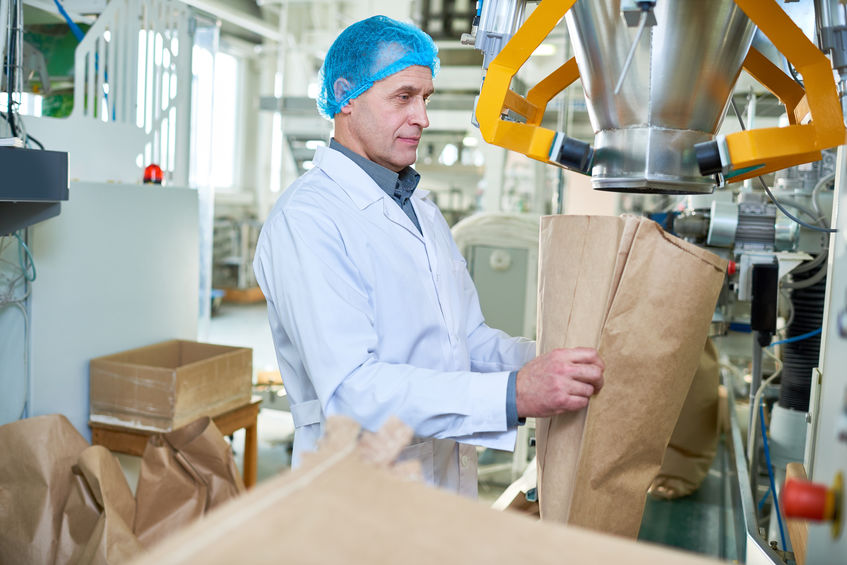Four Ways Automation Helps Food Manufacturers
To be successful, food manufacturers need a flexible and efficient means of getting safe, high-quality products out the door despite current industry obstacles related to workforce shortages, fluctuating demand and tight margins. Fortunately, automation can help food processors rise above these challenges to ensure cost-effective production.

This article outlines four major benefits of automation in food manufacturing operations – increased efficiency and throughput, flexibility, reduced waste and improved product quality – and demonstrates how each advantage boosts the bottom line.
1. Increased Efficiency and Throughput
While all industries are currently facing a shortage of skilled workers, it is having a major impact in the food sector, as many food operations still rely heavily on manual labor. Not only can automated equipment and robots operate 24/7 for continuous, round-the-clock production during times of peak demand (think seasonal foods and holiday items), but it can also help increase speed and efficiency during standard operational periods.
Many food production lines face issues with bottlenecks within the process where human workers have difficulty keeping up with the pace of conveyors or other swift-moving equipment or become bored and/or tired while doing repetitive tasks. Automation placed strategically in these locations can help alleviate these bottlenecks to enhance efficiency and speed and boost product throughput, while at the same time allowing human workers to concentrate on tasks that require more human intervention and intelligence.
In addition, because much of today’s automated equipment includes self diagnostics, data analytics and connectivity, automated machinery is capable of providing alerts when a piece of equipment may be headed for failure, making it possible to avoid costly and time-consuming downtime on the line during times of peak production. Self diagnostics combined with data analytics are not only capable of preventing shutdowns and failure, but because they can predict issues well in advance, it permits maintenance crews to schedule and coordinate repairs during planned breaks in the production cycle, further enhancing uptime.
2. Greater Flexibility
In many sectors of the food processing industry, there are times of great demand for seasonal or holiday items. Adding automation allows food manufacturers to augment production during these periods without hiring additional workers or adding shifts to increase the throughput. Further, many automated systems are modular and/or offer easy-to-adjust programming, allowing greater flexibility and scalability on the manufacturing floor, so automated equipment can be scaled up or down according to fluctuations in demand.
Often, consumer tastes and demands can change, as well, and automation allows food manufacturers to easily accommodate these changes by tweaking recipes within the program. Additionally, food safety laws and regulations are subject to change. Automated equipment can often be adjusted to meet changes in compliance and food safety standards.
3. Reduced Waste
Waste reduction has been a long-time goal for food manufacturers due to the high cost of scrap and the increasing pressure to achieve sustainable operations. Automation can help in several ways. First, because automation provides visibility into operations and the supply chain, it makes it easier to see when perishable ingredients are nearing their expiration date so that the production schedule can be adjusted to accommodate using these products before they are wasted. On the flip side, this visibility also allows food manufacturers to look at demand and accordingly adjust orders within the supply chain to meet the real-time demand, enabling food manufacturers to further reduce food waste by not over producing a product when it is not needed.
Further, because automation cuts down on human intervention and touchpoints on the manufacturing floor, it reduces human errors and human contact during production, which helps reduce contamination, scrap and wasted product.
4. Enhanced Quality Control
There are many ways in which automation can improve the quality of the food produced. As mentioned above, eliminating as many human touchpoints as possible will reduce the amount of food wasted due to contamination. In addition, because automated equipment is accurate, precise and repeatable, it will provide more consistent results than a fully manual process. This allows the product to look, feel and taste the same, batch after batch, with no variation. Such repeatability and consistency is of the utmost importance in an industry where consumers expect the same results every time an item is purchased.
Because inspection and quality control functions can be automated with systems that incorporate machine vision and/or artificial intelligence, it is likely that these operations will more accurately and reliability detect flaws and inconsistencies than human workers will, helping reduce the number of defects that make it to the consumer and allowing food manufacturers to retain a positive reputation and brand image.
An added bonus is that the visibility into the supply chain, the manufacturing process and the distribution network allows traceability, which is essential when something goes amiss and a product is out of spec or, worse, needs to be recalled. Often this level of visibility allows inconsistent or unsafe products to be detected prior to hitting the store shelves, which helps food manufacturers avoid the costs associated with a recall and a tarnished reputation.
Along the same lines, automation’s increased visibility makes it easier to pinpoint the source of quality issues, whether it’s an ingredient supplier within the supply chain or a problem with a piece of manufacturing equipment or within the process, and take corrective action before the next batch is produced.
Increasing speed, efficiency and flexibility will help manufacturers keep up with fluctuating demands and changing food safety standards despite a shortage of skilled workers, while reducing waste and improving product quality will help reduce costs associated with lost batches or damaged products. Investing in automation can provide a return on investment through cost savings and other efficiencies, allowing food manufacturers to successfully produce safe, high-quality products in an industry faced with tight margins and other challenges.
For more information on applying automation in the food industry, please contact a JHFOSTER representative.